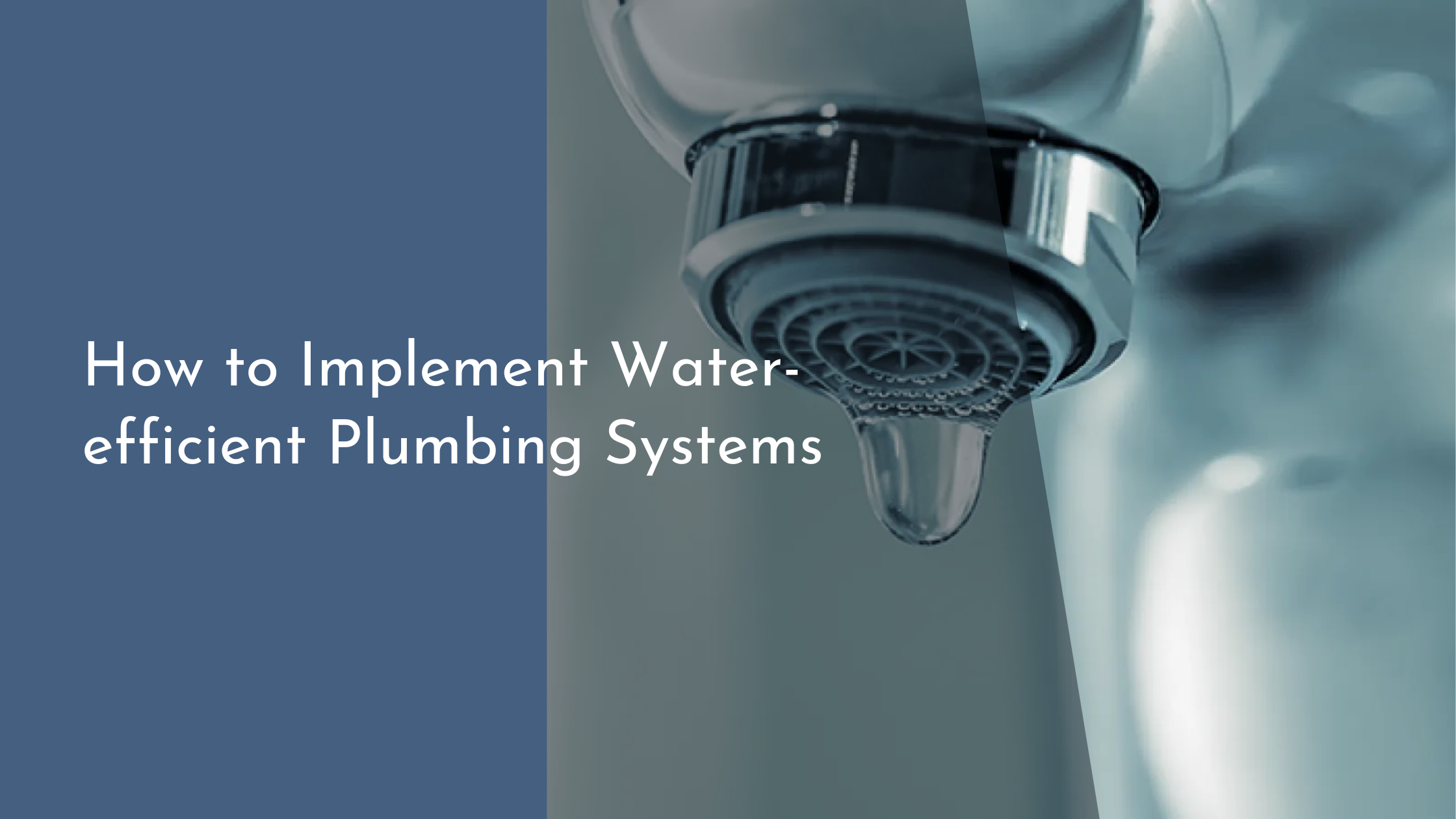How to Implement Water-efficient Plumbing Systems
In today’s world, where environmental sustainability is more critical than ever, implementing water-efficient plumbing systems is a smart and responsible choice. Not only do these systems help conserve our planet’s precious water resources, but they can also significantly reduce utility bills, making them a win-win solution for both the environment and your wallet. In this article, we’ll explore the ins and outs of water-efficient plumbing systems, from understanding the basics to choosing the right fixtures, installation tips, and maintenance strategies. So, let’s dive in and discover how you can make your plumbing system more water-efficient!
Understanding Water-efficient Plumbing Systems
Water-efficient plumbing systems are designed to optimize water usage while maintaining or even improving performance. These systems incorporate advanced technologies and innovative designs that reduce water consumption without sacrificing user experience. By utilizing low-flow fixtures, dual-flush toilets, and efficient appliances, these systems can cut water usage by up to 50%, which is a substantial saving for both residential and commercial properties. Understanding these systems is the first step in making informed decisions about upgrading your plumbing.
The push for water-efficient plumbing systems comes in response to growing concerns about water scarcity and the environmental impact of excessive water usage. Governments and environmental organizations worldwide advocate for policies and incentives that encourage the adoption of such systems. Besides the obvious ecological benefits, these systems also help homeowners comply with local building codes and certifications like LEED, which can enhance property value. By investing in water-efficient plumbing, you’re not just saving water—you’re contributing to a sustainable future.
Choosing the Right Fixtures and Appliances
Selecting the appropriate fixtures and appliances is crucial in setting up a water-efficient plumbing system. Start with low-flow faucets and showerheads, which are designed to use significantly less water than traditional models without compromising performance. Look for products certified by programs like WaterSense, which ensure that they meet rigorous efficiency and performance criteria. These fixtures are easy to install and can make a considerable impact on your overall water consumption.
When it comes to toilets, consider dual-flush models that offer different flush options for solid and liquid waste, allowing users to choose the appropriate water volume for each use. Similarly, opt for energy-efficient dishwashers and washing machines that use less water per cycle. These appliances often come with additional features, such as load-sensing technology, that further optimize water use. By carefully selecting your fixtures and appliances, you can create a comprehensive water-efficient plumbing system tailored to your specific needs.
Installation Tips for Water-saving Success
Proper installation is key to maximizing the benefits of your water-efficient plumbing system. Begin by hiring a qualified plumber who is familiar with water-saving technologies and products. An experienced professional will ensure that all fixtures and appliances are installed correctly, with no leaks or inefficiencies that could negate your water-saving efforts. Additionally, they can provide valuable advice on optimizing water pressure and flow rates to suit your system’s needs.
During installation, pay close attention to the layout and design of your plumbing system. Consider using a manifold system that allows for direct water distribution to fixtures, minimizing water loss through lengthy pipe runs. Insulate hot water pipes to reduce heat loss and enhance the efficiency of your water heating system. By taking these steps during installation, you can ensure that your water-efficient plumbing system operates at peak performance from the start.
Maintaining Your Water-efficient System
Maintaining your water-efficient plumbing system is essential for long-term success and continued water savings. Regularly inspect your system for leaks, as even a small drip can waste a significant amount of water over time. Check for leaks at joints, connections, and around fixtures, and address any issues promptly. Routine maintenance not only prevents water waste but also prolongs the life of your plumbing system.
In addition to addressing leaks, it’s important to clean and maintain your water-saving fixtures and appliances. Mineral deposits can accumulate over time, reducing the efficiency of faucets and showerheads. Soaking these fixtures in vinegar or using a descaling solution can help remove buildup and restore optimal performance. Regularly servicing appliances like dishwashers and washing machines ensures they continue to operate efficiently. By keeping your system well-maintained, you can enjoy the full benefits of water efficiency for years to come.
Implementing a water-efficient plumbing system is a proactive step towards a more sustainable lifestyle. With the right fixtures, proper installation, and ongoing maintenance, you can significantly reduce water usage without compromising comfort or convenience. As we face increasing environmental challenges, every effort to conserve resources counts. By adopting water-efficient solutions, you’re not only benefiting your household but also contributing to the global effort to preserve our planet’s precious water supply. So, take the plunge today and make a positive impact with a water-efficient plumbing system!



